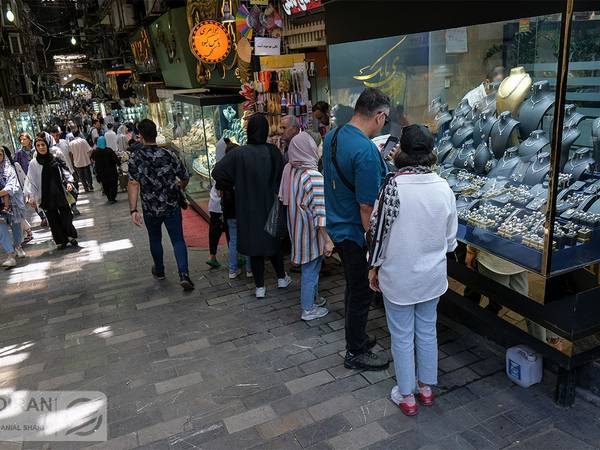As Iran's economic situation continues to deteriorate and the rial loses value, citizens have increasingly turned to purchasing gold, foreign currency, and moving capital out of the country.
Over the past year, the Iranian rial has lost 20% of its value, and in the past three years under President Ebrahim Raisi, it has plummeted by 60%.
The crisis in the stock and real estate markets has discouraged people from investing in these sectors, leading to the withdrawal of over 1,600 trillion rials ($2.6 billion, based on the current USD rate in open markets) from the stock market over the past three years.
In just the first week of August, approximately 20 trillion rials ($33 million) were withdrawn from the Iranian stock market. The real estate market is also in a severe recession, exacerbated by Iran's chronic electricity shortages in the summer and significant gas deficits in the winter. These energy shortages have particularly impacted the construction sector, with power cuts in cement factories causing cement prices to double and halting construction and housing projects nationwide.
With the worsening economic conditions, particularly in the industrial and construction sectors, citizens are increasingly investing in gold, foreign currencies, or moving their capital abroad to preserve their assets. According to the World Gold Council, Iranian citizens’ purchases of gold coins and bars have surged from 25.5 tons in 2011 to nearly 42 tons in 2022, and 44.4 tons last year. In the first half of this year alone, they have purchased more than 22 tons of gold coins and bars.
On the other hand, data from the Central Bank shows that capital flight from the country has been on an upward trend since the imposition of US sanctions against Iran in 2018, rising from $350 million in 2018 to $15 billion last year. In the first nine months of the last fiscal year (March 2023–January 2024), capital flight reached $20.1 billion, a historical record.
No official reports have been published on Iranians' foreign currency holdings, but it appears that government restrictions on the supply of hard currencies like the euro and US dollar have not deterred people from converting their rial assets into foreign currencies. Despite a government ban on holding more than 10,000 euros or dollars, many citizens feel compelled to convert their rial savings into foreign currencies to protect their wealth.
Lotfollah Siahkali, a member of the Parliament’s Industries Commission, stated last year that Iranian citizens held $60 billion in foreign currency reserves, while the Central Bank's governor cited a much lower figure of $16 billion. This discrepancy suggests that even the government may not have an accurate understanding of the amount of foreign currency held by the public in Iran’s chaotic financial system.
Regardless of the exact figure, the presence of even $16 billion in foreign currency stored in people's homes poses a significant challenge for the Iranian economy, which is already grappling with a liquidity shortage in the industrial and construction sectors. This amount is equivalent to half of Iran’s oil export revenues from last year. If the $60 billion estimate is accurate, it would represent approximately 16% of Iran’s GDP.
The core issue is that Iranians lack trust in the Islamic Republic and its flawed economic policies, making it unlikely that people will reintegrate their foreign currency assets into the country’s economy. It's important to note that these figures represent the savings of a small segment of Iran’s affluent population. According to official statistics, more than half of the population lives below the poverty line, struggling to afford basic necessities.
Meanwhile, the government faces a massive budget deficit each year and is forced to borrow from the Central Bank and other financial institutions, exacerbating liquidity issues and further devaluing the rial. Central Bank data shows that from 2021 to 2023, government debt to the country’s banks has more than doubled, exceeding 13,000 trillion rials ($22 billion). Additionally, the Iranian government owes $100 billion to the National Development Fund. As a result, liquidity has also doubled, and the rial has lost 60% of its value.
